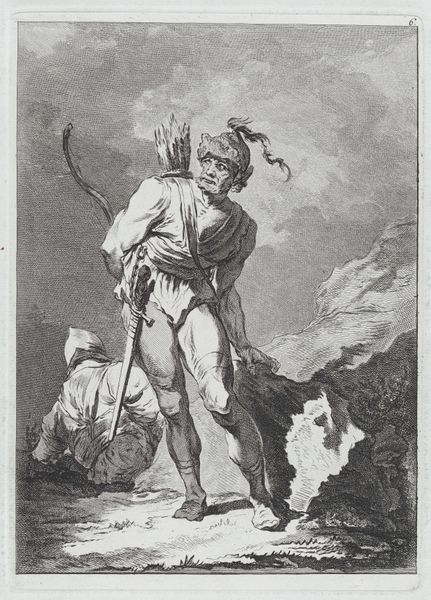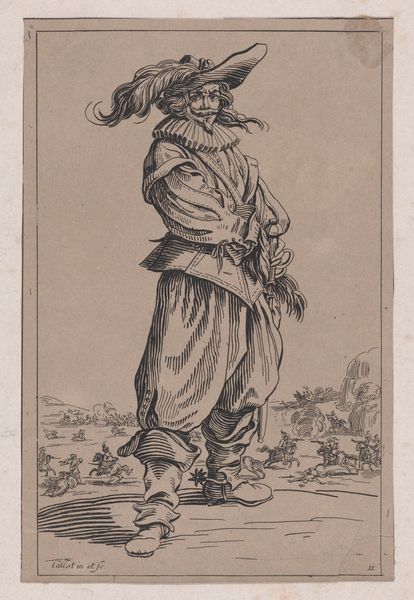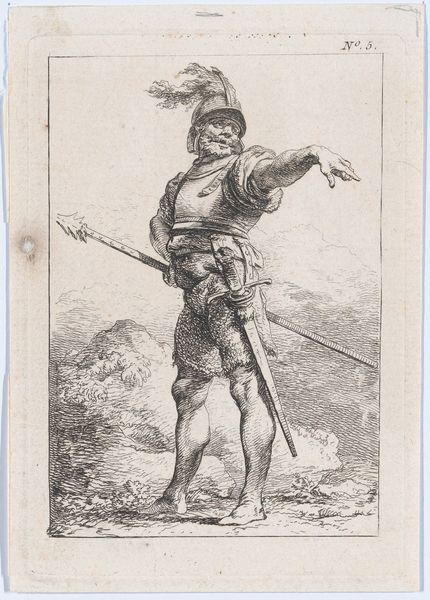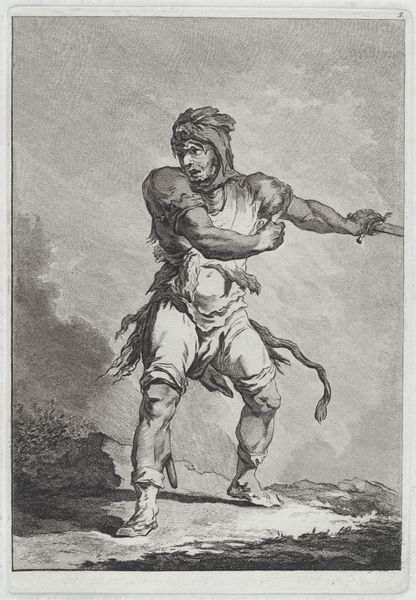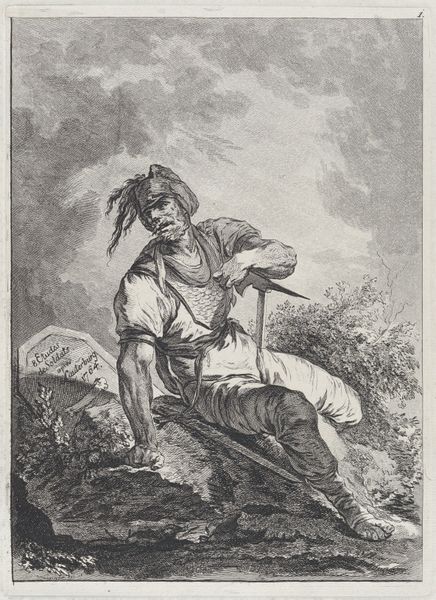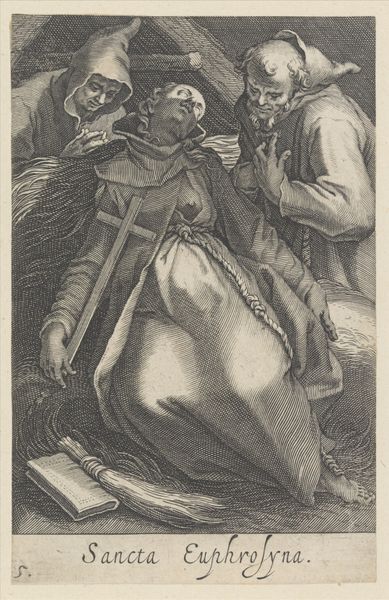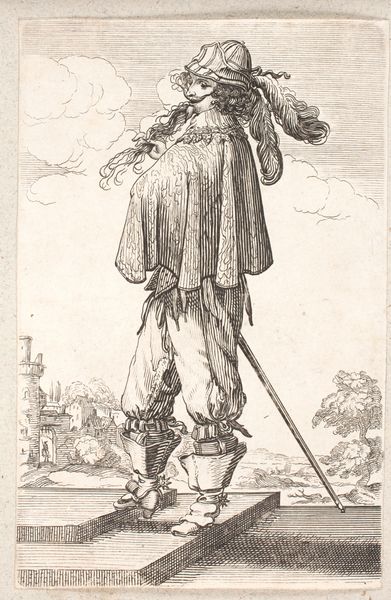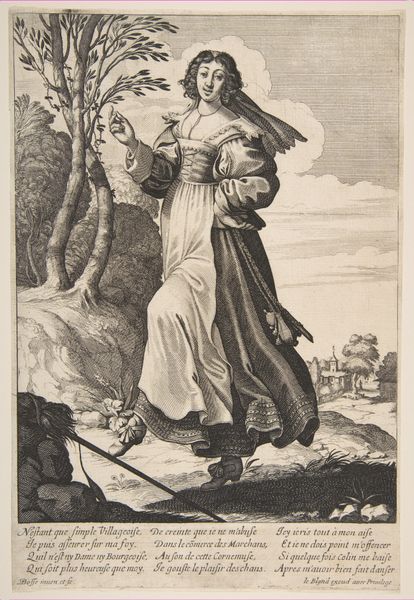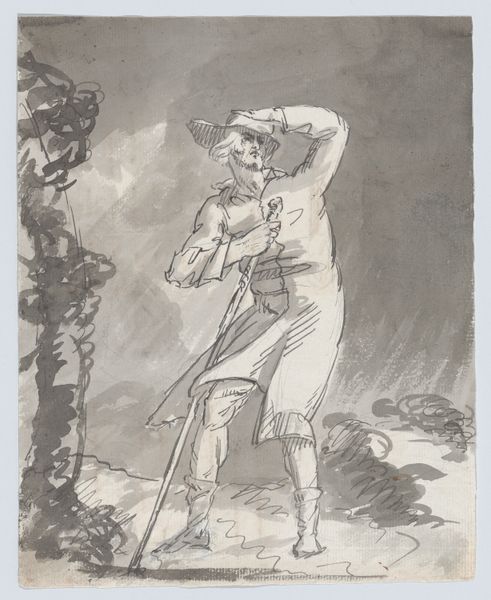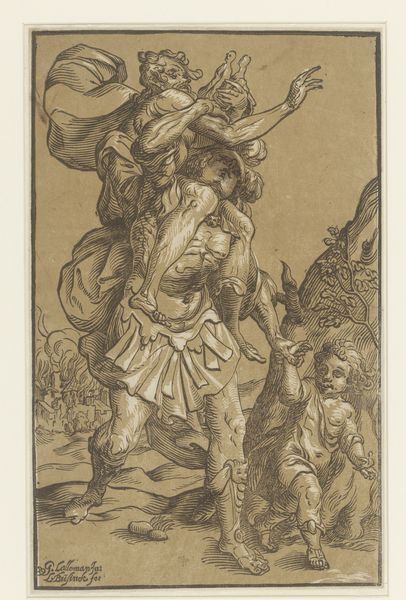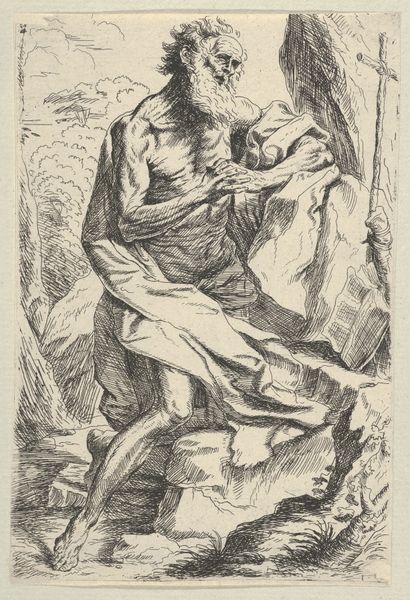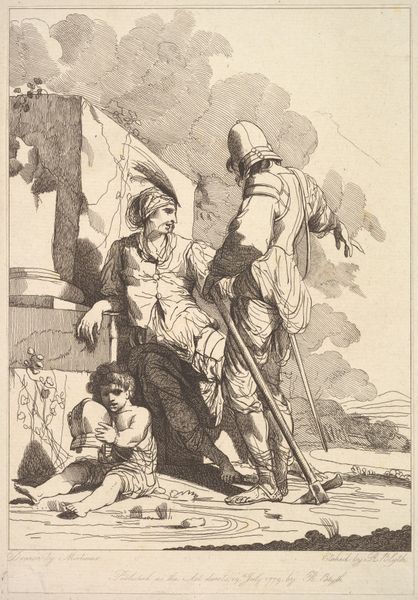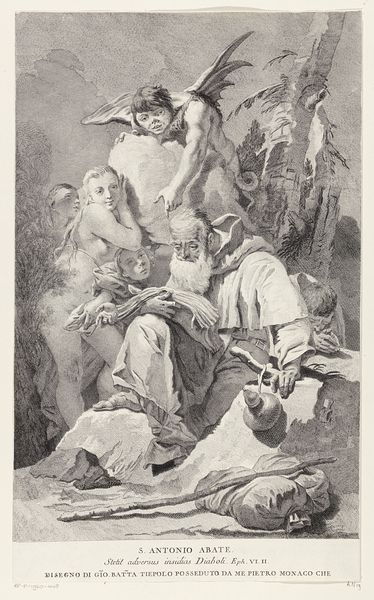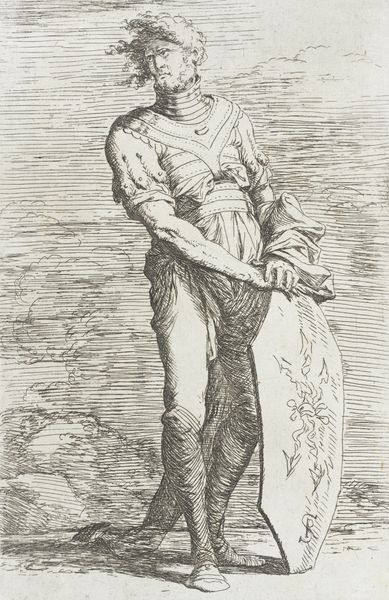
Dimensions: Sheet: 18 1/16 × 11 11/16 in. (45.8 × 29.7 cm)
Copyright: Public Domain
Curator: This etching, entitled "Standing Soldier Drawing his Sword," was completed by Matthias Pfenninger around 1764. Editor: The rawness of the etching lends a captivating texture, a physicality that echoes the soldier's robust stance, poised for action. Curator: Absolutely, the soldier embodies a prevalent heroic archetype popular at that time. His figure connects to the grand tradition of history painting and the glorification of military figures. Editor: The etched lines forming the shading and textures give a kind of immediacy. One feels that the creation of the print—the work done to manufacture it—was important in understanding its cultural value and social function. Curator: Indeed, prints such as these disseminated imagery widely, solidifying cultural and political ideologies. This particular image may have been distributed to smaller populations due to the complexity of creating prints and cost. Editor: I'm struck by the sword as an object, representing both the craft of its forging, and its role as a commodity used in warfare and the extraction of resources from laborers, then and now. Curator: Swords definitely stood for status and prowess. Notice his somewhat theatrical posture? His stance and gesture suggest the influence of Baroque theatricality and a self-aware performance of valor. Editor: What remains is this interplay between human artistry and utility—both in the creation and interpretation of a cultural artifact from the period. Curator: In viewing Pfenninger’s print through this lens, we find threads of history, ideology, and perhaps even performance converging, capturing something of the complexities and spirit of the era. Editor: Ultimately, seeing it is a prompt to interrogate artmaking. The artwork challenges viewers to contemplate its materiality as connected to greater structures of exchange.
Comments
No comments
Be the first to comment and join the conversation on the ultimate creative platform.
